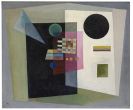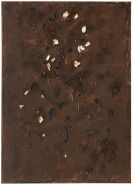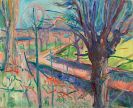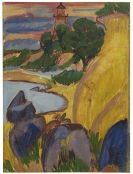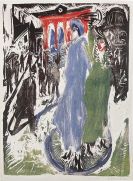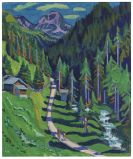
Gio Ponti
Mailand
1891 -
1979
Giovanni (Gio) Ponti, an Italian designer, architect and journalist, studied architecture at the Politecnico di Milano until 1921. After finishing his studies, Gio Ponti worked for two years for Emilio Lancia and Mino Fiocchi in their architecture practice. In 1923 Gio Ponti became artistic director of the Richard Ginori ceramics factory. Gio Ponti's ceramic designs are in the Novecento style.
Along with Emilio Lancia, Giovanni Muzio, and Tommaso Buzzi, Gio Ponti is a major exponent of the Novecento style, which became established in Italy in 1926 as a countermovement to Rationalismo. Inspired by French Art Déco as well as the Wiener Werkstätte, Novecento also owes a stylistic debt to Neo-Classicism.
The designs Gio Ponti created for Richard Ginori were awarded a Grand Prix at the 1925 "Exposition Internationale des Arts Décoratifs et Industriels Modernes" in Paris. That same year, 1925, Gio Ponti also realized his first architecture project in building his own house in Via Randaccio in Milan, which is in the Neo-Classical style.
In the 1920s Gio Ponti also designed furniture for the La Rinascente department store. In 1928 Gio Ponti founded the architecture and design magazine "Domus", remaining its editor for many years although he interrupted his tenure between 1941 and 1947 to found "Stile", a journal of art and architecture. From 1930 Gio Ponti designed lighting and furniture for Fontana. In 1932 Gio Ponti and Pietro Chiesa became joint directors of the Fontana subsidiary FontanaArte.
In 1933 Gio Ponti was a co-founder of the important Milan Triennale. From 1936 until 1961 Gio Ponti was a professor of architecture at the Politecnico in Milan and wrote numerous books on art, design and architecture. The Pirelli Building, which has thirty-four floors, is regarded as Gio Ponti's architectural masterpiece (1955-1958 with Pier Luigi Nervi).
Gio Ponti also designed the Denver Art Museum (from 1971). Legendary Gio Ponti designs are his "Superleggera" (1957) chair for Cassina, the glass and lighting he did for Venini (1946-1950), and the coffee machine he designed for La Pavoni (1948).
Would you like to sell a work by Gio Ponti?
Infos for seller
